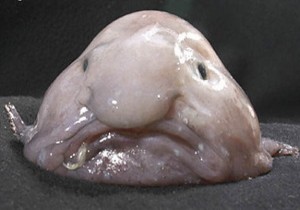Water Closet for July 25, 2014
DOCKSIDE OCEANOGRAPHY: TAKING THE PULSE OF THE OCEAN
by Nick Record*
The sea is a weird potion of invisible magic. I’m a scientist, and a very geeky one at that, and I’m always amazed at what can be learned with simple tools, such as a bucket, seawater, and paying attention.
A friend of mine once leaned over a dock and pulled up a bucket of seawater for use in an aquarium. The specimens that she had collected didn’t survive, and the seawater wound up sitting unused in a clear tank.[pullquote]”the Gulf of Maine has been hit by some extreme changes over the past decade or so. Our waters have warmed faster than 99 percent of the world’s oceans”[/pullquote]
At first, the water appeared empty, as though the tank was filled from a tap. However, over the next few weeks, the aquarium came to life. First, from the nothingness, tiny specks materialized, appearing to dart around like frantic kids at recess. Then a whole succession of species emerged—algae, worms, shrimp, clams, scallops and even fish—all from an apparently empty bucket of seawater.
The vast majority of ocean species are invisible—so tiny that you could snort an entire ecosystem up your nose while swimming, everything from plants, animals, fungus-like creatures, to billions upon billions of (harmless) marine viruses. Yet these invisible organisms are the source from which oceanic life emerges—from vampire squid to humpback whales to my personal favorite, the blobfish.
These tiny microscopic organisms, collectively referred to as microbes, form the base of the food web. Most of the ocean’s biomass is microscopic. All of the larger creatures that we love depend on this massive food resource. Many of the bigger marine creatures, in fact, begin their lives as tiny specks. Microbes are also so abundant that they alter the global balance of greenhouse gasses, and in doing so, affect the world’s climate.
A group of my colleagues at Bigelow Laboratory has been tracking changes in this microbial soup by dipping buckets—albeit fancy, scientific buckets—off the side of a dock in West Boothbay every week for almost 15 years. Just like in my friend’s bucket, there are successions of species appearing and disappearing.

Blobfish – Internet photo
Off the dock, they come and go with the seasons, much like watching backyard plants bloom at different times of year. Some species arrive early—the “tulips of the sea”—and others later—let’s say, the “pumpkins of the sea.” By collecting buckets of water week after week, year after year, my colleagues are effectively taking the pulse of the ocean ecosystem.
When you’ve been taking a pulse for that long, you can start to see signals of how changing climate is rearranging the ocean food web. Species once common have disappeared, and once-rare visitors have settled in to stay. These dynamics are particularly important to watch, as the Gulf of Maine has been hit by some extreme changes over the past decade or so. Our waters have warmed faster than 99 percent of the world’s oceans, based on satellite temperature data, and half of our heaviest rainfall years since 1896 have occurred in the last decade.
I’ve done some preliminary work on the dock data, and it looks like the very smallest critters—the nanoplankton and picoplankton (you could fit millions on the head of a pin)—are the most sensitive to some of these changing conditions.
For example, the pulses of increased freshwater have a significant negative impact on their abundance levels, and the correlations are some of the strongest I’ve seen in any ecological data. Because these changes occur at the base of the food web, they alter the amount of energy available throughout the ecosystem.
There is a lot of press about how fishing has altered marine food webs. Changes at the invisible microbial level can have just as large an impact, and these changes, being so closely tied to climate, are unlikely to respond to many management efforts.
Most of the ocean’s ecology is invisible to the naked eye, and if we hope to understand what will happen to the more charismatic species—the vampire squid and the blobfish—we should strive to understand this invisible ecology. Long term monitoring, like the dockside samples, is one key to this understanding. To paraphrase the famous oceanographer Henry Bigelow: All sea life comes from microbes.
* This post by Dr. Nick Record, a senior research scientist at Bigelow Laboratory of Ocean Sciences, Colby College, Maine, originally appeared in the July 2014 edition of the Working Waterfront. Dr. Record and Working Waterfront have kindly given the Stream Team permission to use it in The Water Closet. The Water Closet doesn’t have light or electron microscopes. Dr. Record reminds us of what we without are missing. Our waters are truly alive.
_______________________________________________________________________
WATER RESOURCE AND CONSERVATION INFORMATION
FOR MIDDLETON, BOXFORD AND TOPSFIELD
| Precipitation Data* for Month of: | April | May | June | July | |
| 30 Year Normal (1981 – 2010) Inches | 4.53 | 4.06 | 3.95 | 3.89 | |
| 2013 – 14 Central Watershed Actual | 2.88 | 2.77 | 2.03 | 6.2 as of 7/22** | |
Ipswich R. Flow Rate(S. Middleton USGS Gage) in Cubic Feet/ Second (CFS):
For July 22, 2014 Normal . . . 7.3 CFS Current Rate . . . 24 CFS
**Updated July precipitation data is from MST gage.*Danvers Water Filtration Plant, Lake Street, Middleton is the source for actual precipitation data thru June. Normalsdata is from the National Climatic Data Center.
THE WATER CLOSET is provided by the Middleton Stream Team: www.middletonstreamteam.org or <MSTMiddletonMA@gmail.com> or (978) 777-4584